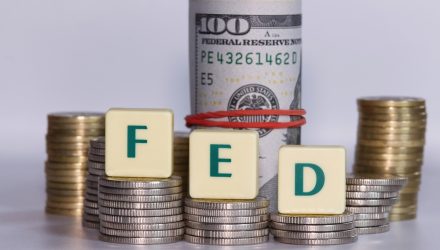It appears unlikely that the Fed will lower interest rates this month. And with some recent data points indicating inflation is again perking up, the timeline for rate cuts is arguably murky.
That implies the wait for the Fed to cut rates could be longer than expected. Additionally, it might not materialize at all this year. However, that doesn’t mean all fixed income strategies are in for a rough ride. Some market observers have confidence in levered or senior loans as an avenue for coping with Fed rate cut disappointment.
That could stoke interest in the Invesco Senior Loan ETF (BKLN). The $7.09 billion BKLN follows the Morningstar LSTA US Leveraged Loan 100 Index. The fund turned 13 years old earlier this month, confirming its status as one of the “founding fathers” of the leverage loan exchange traded fund category. It’s also relevant today.
Environment Could Be Right for BKLN
The ability of BKLN to survive and thrive in an environment that could prove to be “higher for longer” isn’t rooted in hope. Rather, it’s rooted in fact. Over the past two years, the Invesco ETF returned 14.8% while the Bloomberg U.S. Aggregate Bond Index lost 5.1%. Additionally, BKLN was 180 basis points less volatile on an annualized basis than “the Agg.”
Part of the reason for BKLN’s durability in the face of high interest rates is that many levered loans feature floating rate note (FRN) components. This reduces the sensitivity of the asset class to rising interest rates. Despite rate risk being minimal with BKLN, investors aren’t cheated out of income with the ETF as highlighted by a 30-day SEC yield of 8.24%.
Still, some fixed income investors may be shying away from bank loans and ETFs such as BKLN. Why? There are concerns about the asset class that were formulated over the past couple of years. However, Andrew Sheets, head of Corporate Credit Research at Morgan Stanley, says those headwinds are waning.
“Yet today many of those factors are all looking better. Estimates for US 2024 GDP growth have been creeping up. CLO activity has been restarting,” he noted. “And some of this recent growth and inflation data means that markets are now expecting far fewer rate cuts – which means that the yield on loans would also remain higher for longer. And that’s all happening at a time when the spread on loans is relatively elevated, relative to similar fixed rate high yield bonds.”
In what could be good news for BKLN, Sheets adds that if even inflation improves, the FRN component of senior loans provides ballast for investors in a higher for longer climate.
For more news, information, and analysis, visit the Innovative ETFs Channel.








